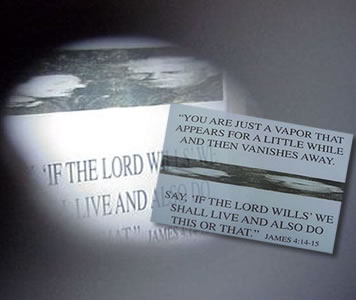"Through
good times and bad times, I'll be at your side forever-more, that's
what friends are for". These famous lyrics sung by Stevie Wonder
and Dionne Warwick surely apply to the wonder of the religious society
who call themselves "The Friends", also known as "The
Quakers." Since their early beginnings, they have shown themselves
to be friends in good times and bad times through their steadfast
service to others. I had the privilege of traveling with a study group
initiated through the Pennsylvania Historical and Museum Commission
(PHMC), tracing the steps of William Penn from the Village of Penn
in Buckinghamshire to his father's roots in Bristol, England. We stopped
at Oxford University where William Penn was influenced by his professor,
John Locke, concerning this "dissenting" philosophy still
referred to as "Quakerism". I asked our host at the Friends
House in London, "Why are they called Quakers?" She explained
that the term was coined by a prosecutor during a 17th century religious
court trial. The term described how the people trembled or quaked
in fear because they knew the consequences of their direct defiance
to the doctrines of the Church of England. Dissenters from the official
Church of England were often hanged, drawn, and quartered for defying
the Church. I would quake too, knowing the gruesome processes used
for these tortures. Our guide described those processes while we were
at the Tower of London, where our own William Penn was imprisoned
for being a Quaker. Penn may have "quaked" but he courageously
persisted in his beliefs and wrote the controversial book "No
Cross, No Crown".
Sabastian Franck (1499-1542) was the first
person during the Reformation period to cite an "invisible church
from whom God sends out true laborers into his harvest". I would
describe Quakers as the embodiment of Franck's nonsectarian group.
One hundred years after Franck's life, during Penn's life and into
the current day, the Quakers remain almost invisible but
hard working laborers for mankind. Their "readings" have
caused them to follow what they individually and corporately believe
are promptings from God to establish good works through the formation
of lasting institutions and by performing various services. Most Quakers
follow Jesus, not by loud preaching, but through a quiet and gentle
spirit mirroring His ministry. A true disciple would follow the teaching
of his master. The Master, Jesus, encouraged all to directly request
of Him, God incarnate, the forgiveness of their sins and to receive
the baptism of the Holy Spirit within their souls to be declared righteous
before God. William Penn further believed that after such a confession
of faith one should follow the precept of James, the half-brother
of Jesus and author of the book of James (ca. 45-50 A.D. in the Holy
Bible). The book of James is interestingly considered part of the
Catholic and Protestant Epistles in a letter addressed to the twelve
tribes of Israel (the Jews). In verse 2-.18 James writes: "Show
me your faith without the works, and I will show you my faith by my
works". Penn believed that faith without works is a dead faith.
Penn's book "No Cross, No Crown" challenges readers to consider
that if they say that they have a faith it should bear the cross of
a personal daily struggle against sin and should be a faith which
is alive and proves itself by the labor of actively serving others.
|
|
|
| During
his life, Penn regularly attended Quaker meetings at the Jordan Meeting
House in England, where he is now buried. Penn also attended Quaker
meetings in Fallsington, Pennsylvania, the site of the Moon-Williamson
log home. deGruchy Masonry had the privilege of performing restoration
work on the log home's stone foundation this year. The house was the
boyhood home of the founder of the Williamson Trade School, where
I attended and learned masonry trade. This restoration project allowed
me to express my gratitude to both William Penn, for his encouragement
of the quiet hardworking service of the Quakers, and to Isaiah Vansant
Williamson, also a Quaker, who founded the Williamson Trade School
in 1888. Williamson Trade School, a private facility, provides valuable
trade skills and vocational education complemented by many other academic
courses of study which are also available at the school. Since 1888,
no student, including myself, has or will pay any money to live and
learn at Williamson. |
|
|
| A
stainless steel plaque (right), inscribed with a scripture, accompanies
the anamorphic projection of the benefactors of the Schuylkill Meetinghouse
restoration project. A viewing hole, drilled into the stone wall at
an acute angle, allows the viewer to look through the hole and see
the image come into focus (left). |
| Restoring
the Schuylkill Meetinghouse Stone Wall |
| This
year, deGruchy Masonry completed a restoration project for the Quaker
Schuylkill Meetinghouse in Phoenixville, PA. A member of the Meetinghouse
read my last newsletter and was inspired to come to the aid of the
structure's failing historic stone cemetery wall surrounding the modest
historic gravestones. Over eighty-feet of wall had fallen into
the street and five hundred-feet had lapsed into disrepair. At first,
the members discussed removing the wall rather than rebuilding it.
However, by working together and with the aid of a significant donation,
deGruchy Masonry completed the wall with no cost to the church society.
I was so inspired by the |
|
|
|

